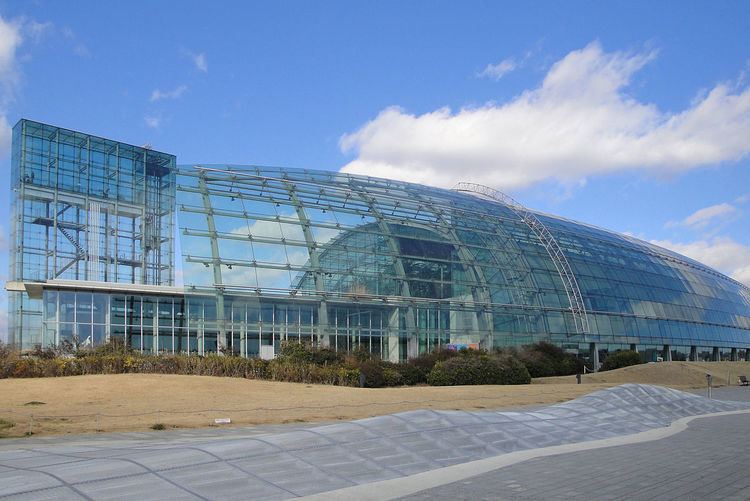Date opened 15 July 2000 Opened 15 July 2000 | Memberships JAZA Phone +81 246-73-2525 | |
 | ||
Location Iwaki, Fukushima, Japan Floor space 13,714 m (147,620 sq ft) Volume of largest tank 2,050 m (540,000 US gal) Total volume of tanks 3,990 m (1,050,000 US gal) Address Japan, 〒971-8101 Fukushima Prefecture, Iwaki, Onahama, Tatsumicho−50 Hours Open today · 9AM–5:30PMTuesday9AM–5:30PMWednesday9AM–5:30PMThursday9AM–5:30PMFriday9AM–5:30PMSaturday9AM–5:30PMSunday9AM–5:30PMMonday9AM–5:30PM Similar Shiramizu Amidadō, Abukuma‑do, Iwaki Marine Tower, Aqua World, Izumi Station Profiles | ||
Aquamarine fukushima
Aquamarine Fukushima (アクアマリンふくしま, Akuamarin Fukushima) (officially Marine Science Museum, Fukushima Prefecture (ふくしま海洋科学館, Fukushima Kaiyō Kagakukan)) is an aquarium located in Iwaki, Fukushima, Japan.
Contents
aquamarine fukushima
History
The aquarium opened on 15 July 2000. The nickname "Aquamarine Fukushima" was selected in 1998 from a total of 4,722 applications.
The 2011 Tōhoku earthquake and tsunami on 11 March 2011 resulted in power being cut off to the aquarium. Many fish died, but some marine mammals and sea birds were subsequently transferred to Kamogawa Sea World, 100 kilometers (62 mi) to the south, Ueno Zoo in Tokyo, Tokyo Sea Life Park, Mito Sea Paradise, and New Enoshima Aquarium. Although the main building sustained only minor damage, outside pools were washed away, and there was major damage to the electrical system (causing the death of about 90% of the animals in the aquarium). The facility was closed after the tsunami, and reopened to the public on 15 July 2011, following restoration.
Exhibits
The aquarium highlights the sea life in the Shiome Sea, where rivers flow into the sea and meet the collision of the Kuroshio and Oyashio ocean currents. The centerpiece tank, "The Shiome Sea", holds 2,050 cubic meters (540,000 U.S. gal) and contains a triangular tunnel that separates two tanks with different water temperatures (the two currents).
The aquarium includes a botanical garden on the fourth floor that shows the plant life of Fukushima, and from which visitors can see the top of the main tank.
